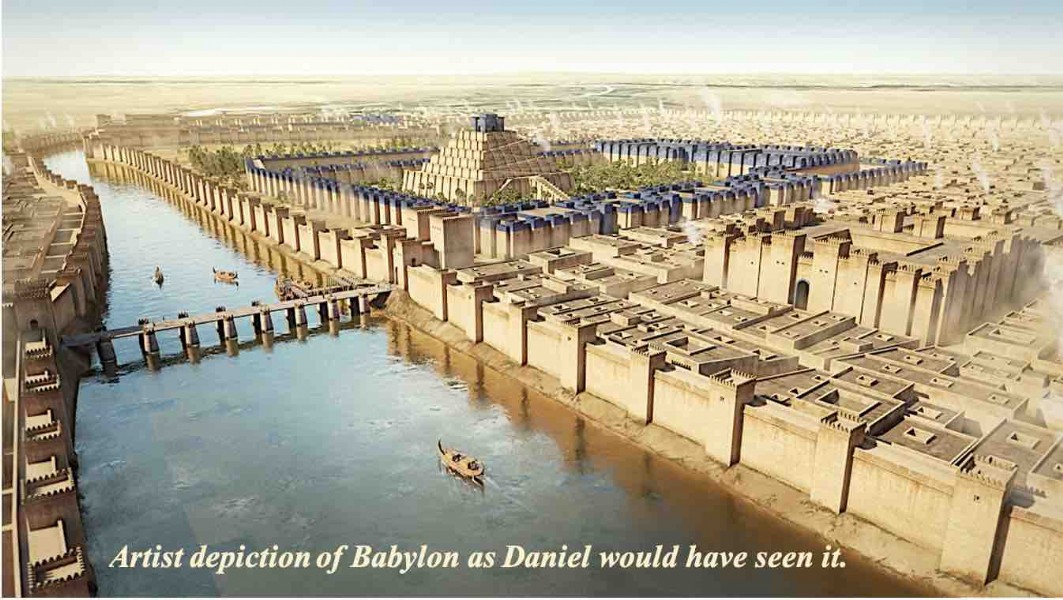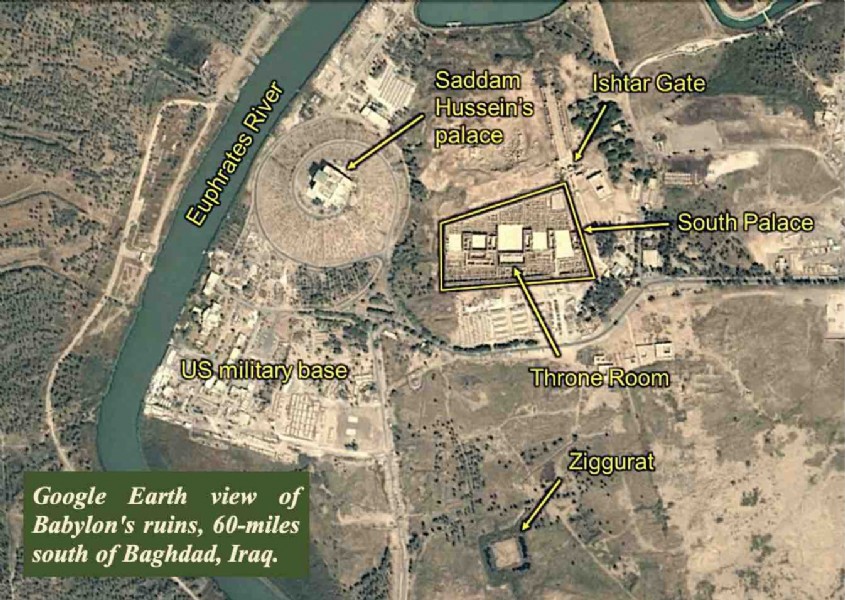Babylon’s king Nebuchadnezzar (604-562 BC) “walked in the palace of the kingdom of Babylon … and said, Is not this great Babylon, that I have built for the house of the kingdom by the might of my power, and for the honour of my majesty?” From man’s perspective, the king had much of which to boast. Historian Herodotus (c. 450 BC) described Babylon as a square city 14 miles per side, surrounded by brick walls 300 feet high and 25 feet thick - with another wall 75 feet behind the first; and all walls extended 35 feet below ground. The city had 250 towers, each 450 feet high, a wide and deep moat encircling the city. The Euphrates River flowed through the middle of the city, and its half-mile-long drawbridges closed at night. Eight massive gates controlled its access, and the inner city had 100 brass gates. The streets were paved with 3-foot square stone slabs. Hydraulic pumps raised water up to the city. A ziggurat (stepped tower and temple to Marduk) rose high over the city, displaying golden statues weighing over 50,000 lbs of solid gold each. An 18-foot-high solid gold human figure loomed nearby. Nebuchadnezzar used over 15 million bricks, each bearing his name. Babylon was no shanty town (see artist depiction, below).

Systematic and scientific excavations led by Robert Koldewey of the German Oriental Society began in 1899 and continued for 18 years. Koldewey made numerous discoveries, including the famous blue-bricked Ishtar Gate, the Processional Way which led to the Temple of Marduk, and the Southern Palace of king Nebuchadnezzar. In 1987, Saddam Hussein came to visit the site of Babylon’s ruins. He ordered one of the palaces to be rebuilt, with little regard for the archaeological past which he erased; however, some remains untouched and are clearly visible in Google Earth images today (see photo, below).

Daniel saw this daily, as did the prophets Jeremiah and Ezekiel. While Lot became too comfortable with Sodom’s luxury, Daniel never did. Though surrounded by great wealth, he faithfully conveyed God’s messages to this powerful king: “It is thou, O king, that art grown and become strong: for thy greatness is grown, and reacheth unto heaven, and thy dominion to the end of the earth. [Yet] … they shall drive thee from men, and thy dwelling shall be with the beasts of the field, and they shall make thee to eat grass as oxen, and they shall wet thee with the dew of heaven, and seven times shall pass over thee, till thou know that the most High ruleth in the kingdom of men, and giveth it to whomsoever He will. … Wherefore, O king … break off thy sins by righteousness …” If Daniel confronted a mighty king, could you speak God’s truth to power?
Condensed from Biblical Archaeology Report, et al. Sources: Herodotus from Bible-History.com; History from Biblical Archaeology. Annotated map from CrossRoadsBible.net. Artist depiction from ArtStation.
Like this? Consider sharing it to Facebook by clicking the linked icon below.
